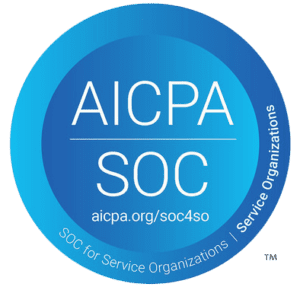Introduction
As investment options continue to multiply and clients are faced with more options and information than ever, communication from advisors takes on critical importance. Financial reviews and client reporting processes are the foundation of accountability and trust in the advisor/client relationship.
Advisors must strive to communicate clearly with clients about how their goals align with performance situations, risk tolerance, and the broader context of market conditions. If reporting processes are done well, the clients will be poised to overcome turbulent market conditions, temper unrealistic or out of touch return expectations, and facilitate a productive two-way feedback loop.
At Bridge, we believe that reports should be easy for clients to understand and equally easy for advisors to generate. The foundation of effective reporting conversations is a focus on consistency, clarity, and completeness. In this post, we’ll explore each of these elements and how they impact reporting processes.
Consistent
Consistency and timeliness are the foundation of a strong client reporting relationship. Unfortunately, in recent years that has been a trend shift towards infrequent reporting. The practice of letting annual reviews become the only review, while quite common, can actually put both the advisor and the client at a significant disadvantage. On the client side, in an annual reporting relationship, the client may not know the status of their financial position for the year’s duration. Even without volatile markets, that’s a long time to go without an update. Additionally, the advisor risks putting themselves on the back foot, because the client may doubt if the advisor is being proactive or acting in their best interest.
Even in the case of quarterly reporting, the client may be left feeling in the dark on their financial position. While providing clients with negative or challenging information can be difficult, it’s actually much more damaging for the client to feel unsure of their current position. Studies have shown that the anxiety of not knowing can be much more stressful than just getting the most up-to-date information, whether good or bad. In either case, the advisor has an opportunity to demonstrate command of their clients finances, especially when information is comprehensive (more below!).
In the case when a client receives updates only annually or quarterly, they’re more inclined to deeply scrutinize the reports rather than getting reinforcement on key messages from their advisor. Offering information only a quarterly basis can lead to the client becoming focused on that point in time rather than the arc of the relationship.
On the other hand, leveraging ongoing, timely updates can go a long way in easing client concerns and confusion. When clients have access to more frequent updates via continuous reporting, they often become less focused on getting any one particular number/update. It’s the knowledge that the information is readily available to them in the case they need it that puts their mind at ease, and the consistency that leads to understanding and big picture thinking.
Clear
The foundation of a sound client reporting process is information that is clear and easy to understand. Sometimes advisors fall into the common misstep of providing overly complex investment analysis as part of their client reporting. However, in many cases, providing too much analytical information can actually create more client confusion rather than helping clients understand their financial picture. Many clients value not having to take a deep dive in markets and investment analysis when they work with a financial advisor.
As an advisor, your clients rely on you to distill complex analytical information into easy to understand concepts and presentations. This is why clarity and brevity should always be the core goal and focus of your reporting processes.
Avoiding information overload can go a long way in simplifying the reporting process. Rather than focusing on presenting as much data as possible, the advisor should emphasize sharing information that is most relevant to the client’s goals, concerns, while summarizing key parts of your firm’s investment and financial narrative. Bridge’s reporting technology allows advisors to create clear relevant reports for each client’s unique financial situation, without the need to customize every report by hand or inundate clients with hard to understand data.
At the end of the day, what clients care most about is if they are on-track to meet their goals. Your reporting processes should be focused on creating valuable conversations and delivering key talking points that strengthen the advisor/client relationship.
Complete
Another key facet of a productive reporting process is completeness. The client review conversations should cover all of the critical areas related to client goals and concerns:
- Discussing performance relative to client goals: When approaching a client review, it’s important to not focus on recitation of data. Rather, as their advisor, the client is expecting you to add context to that data including information about the overall market performance, and then drilling into the client’s own portfolio.
- Reviewing health and family changes: A change in the client’s personal situation will impact risk tolerance, performance expectations, and also financial products needed. While some clients may readily volunteer this information, it’s important to ask gentle probing, open-ended questions to better understand current or future changes that will impact the client’s plan. Reviewing key events and family details from the past is a great place to check in and spur further conversations.
- Assessing overall market conditions: As an advisor, you must distill information about complex macro and microeconomic fluctuations in easy-to-understand terms for your clients. A common mistake is for clients to have unrealistic return expectations, so setting context around market conditions during performance reviews is key. To put it simply: consistent reinforcement of your investment and market philosophy is key to setting and maintaining good expectations.
- Reviewing plan assumptions: The foundation of the client’s plan including financial goals, risk tolerances, and investment timelines, must be reviewed to ensure they’re properly aligned. Any changes in these critical assumptions must be discussed thoroughly with the client and agreed upon before the development of an updated plan.
- Engaging with clients to better understand personal values: As an advisor, you must delve beyond financial performance to get to the heart of what dictates a clients’ financial goals–their values. In today’s climate, investment analysis has reached the point at which almost any belief or client preference can be accommodated, and proactive advisors should make this information and these options readily available to their clients. Make sure to ask open-ended questions to understand if and how clients want their finances aligned with the rest of their values.
Call to Action
Are you interested in learning more about how to improve your reporting processes and strengthen client relationships? Bridge has an eBook available for download: How to Make Reporting Your Competitive Advantage.
The guide covers:
- What are the critical components of impactful reporting
- A list of the most common reporting mistakes advisors make, so you can avoid them
- Actionable tips to simplify your reporting processes


